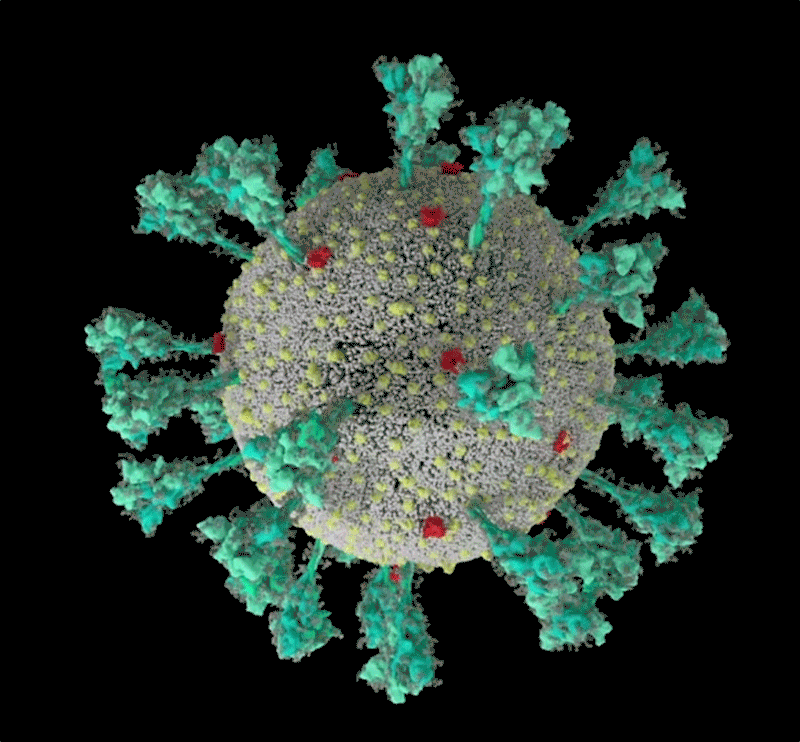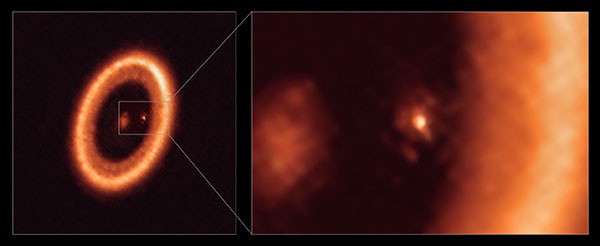Hello Nature readers, would you like to get this Briefing in your inbox free every day? Sign up here.

A computer simulation of the structure of the coronavirus SARS-CoV-2.Credit: Janet Iwasa, University of Utah
This is how SARS-CoV-2 infects cells
Scientists are unpicking the life cycle of SARS-CoV-2, the tricks it uses to evade detection and the quirks that make the Delta variant so dangerous. Researchers have discovered key adaptations that help the virus to grab on to human cells with surprising strength and then hide itself once inside. Later, as it leaves cells, SARS-CoV-2 executes a crucial processing step to prepare its particles for infecting even more human cells.

Source: Hui (Ann) Liu, Univ. Utah; Graphic: Nik Spencer/Nature
COVID vaccines slash viral spread
Many vaccines have been shown to provide strong protection against COVID-19. Now, growing evidence finds that they also reduce the spread of SARS-CoV-2 by more than 80%. However, the studies were done before the highly transmissible Delta variant became prevalent — and scientists say it might be more easily spread by vaccinated people than earlier variants.
Reference: medRxiv preprint 1 & medRxiv preprint 2
NIH windfall raises hopes — and fears
A US plan to boost funding for the National Institutes of Health (NIH) by US$9 billion in 2022 has won praise from researchers and science-policy analysts. But some observers worry that the windfall could lead to increased competition and career uncertainty among PhD students and postdoctoral researchers. Previous large increases in funding — notably the doubling of the NIH budget from 1998 to 2003 — created a glut of junior scientists who lacked long-term career prospects, says science-policy researcher Navid Ghaffarzadegan. “We need to invest in science, but there are side effects that we have to watch out for.”
Features & opinion
Stop mass COVID deaths in Africa now
“As I write, mass fatalities from COVID-19 have begun in Africa,” writes Mosoka Fallah, the former director-general of the National Public Health Institute of Liberia. Meanwhile, “rich countries are hoarding vaccines, allowing doses to expire while unvaccinated people who want to be immunized die”. In 2014, during the worst period of the Ebola outbreak in Liberia, Fallah saw people die in the streets as the world stood by. He issues a powerful plea to not let it happen again with COVID-19.
“Let me say this as an African: our world as we know it is on the brink; we face massive death tolls, and the collapse of economies and nations,” he writes. “What is the real meaning of humanity? For all lives to be given the same value.”
One hundred years of solitude
To celebrate its 100th anniversary, Science News looks back at a century of astronomy. In that time, Earth has been booted out from its place at the centre of the Universe, spacecraft have flown past every one of the Solar System’s planets and and the Milky Way, we now know, is just one of billions of galaxies positively packed with exoplanets.
Image of the week

Astronomers have made the first clear detection of a moon-forming disc around an exoplanet. The ring of gas and dust surrounds the exoplanet PDS 70c, one of two giant, Jupiter-like planets orbiting a star nearly 122 parsecs away. The disc has about the same diameter as the distance from our Sun to the Earth and enough mass to form up to three satellites the size of the Moon. (The New York Times | 5 min read, intermittent paywall)
Reference: The Astrophysical Journal Letters paper
